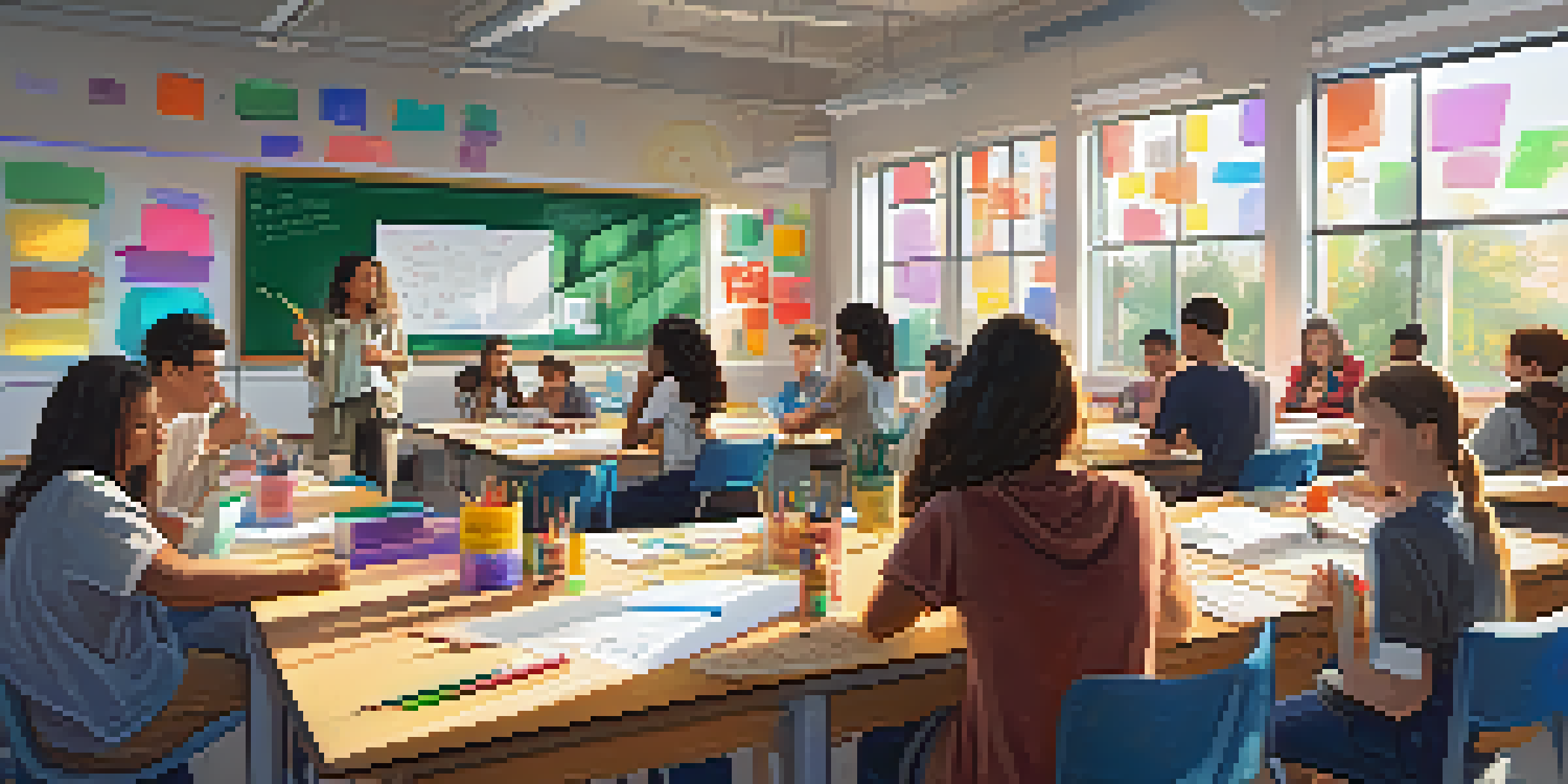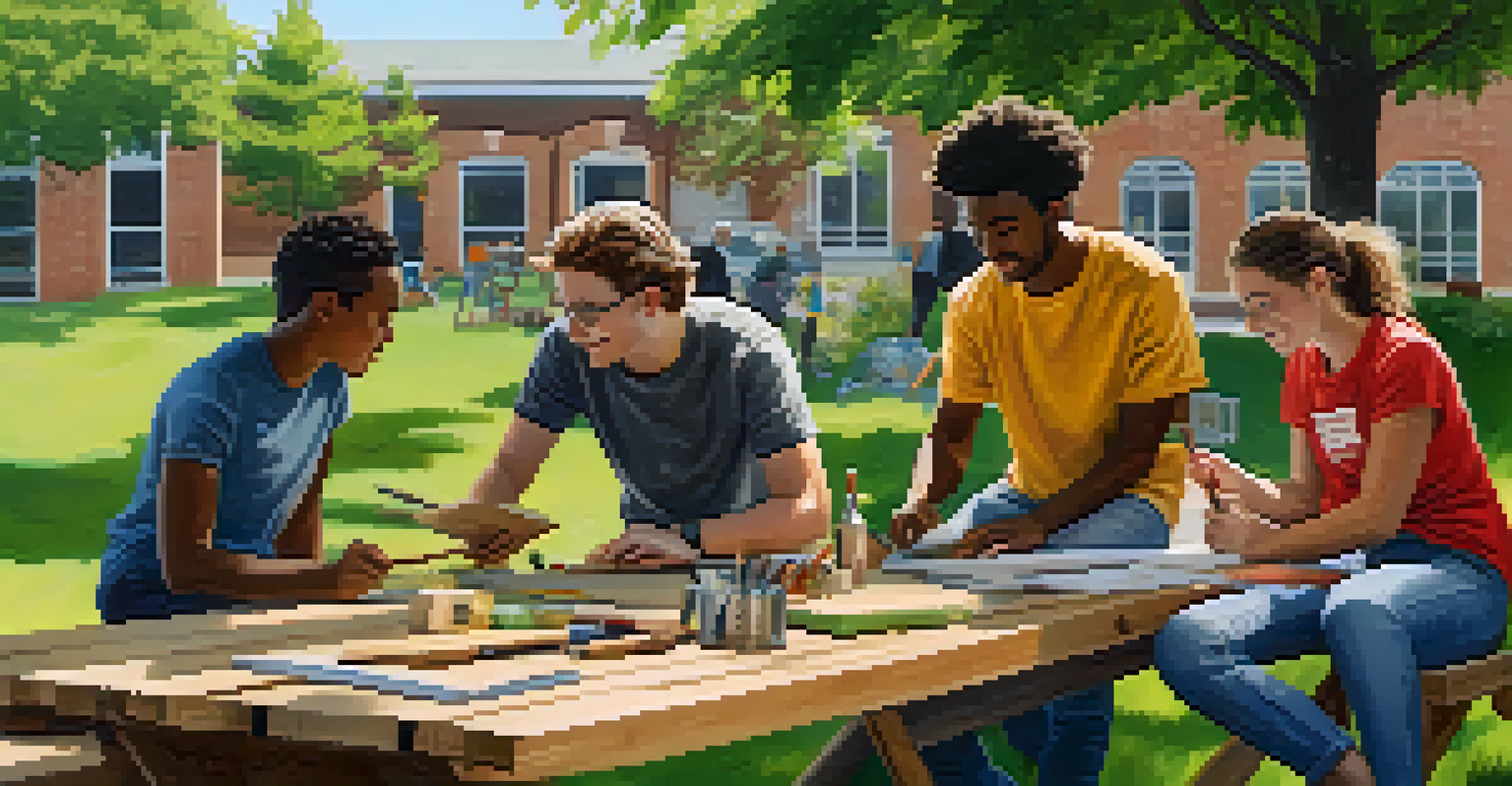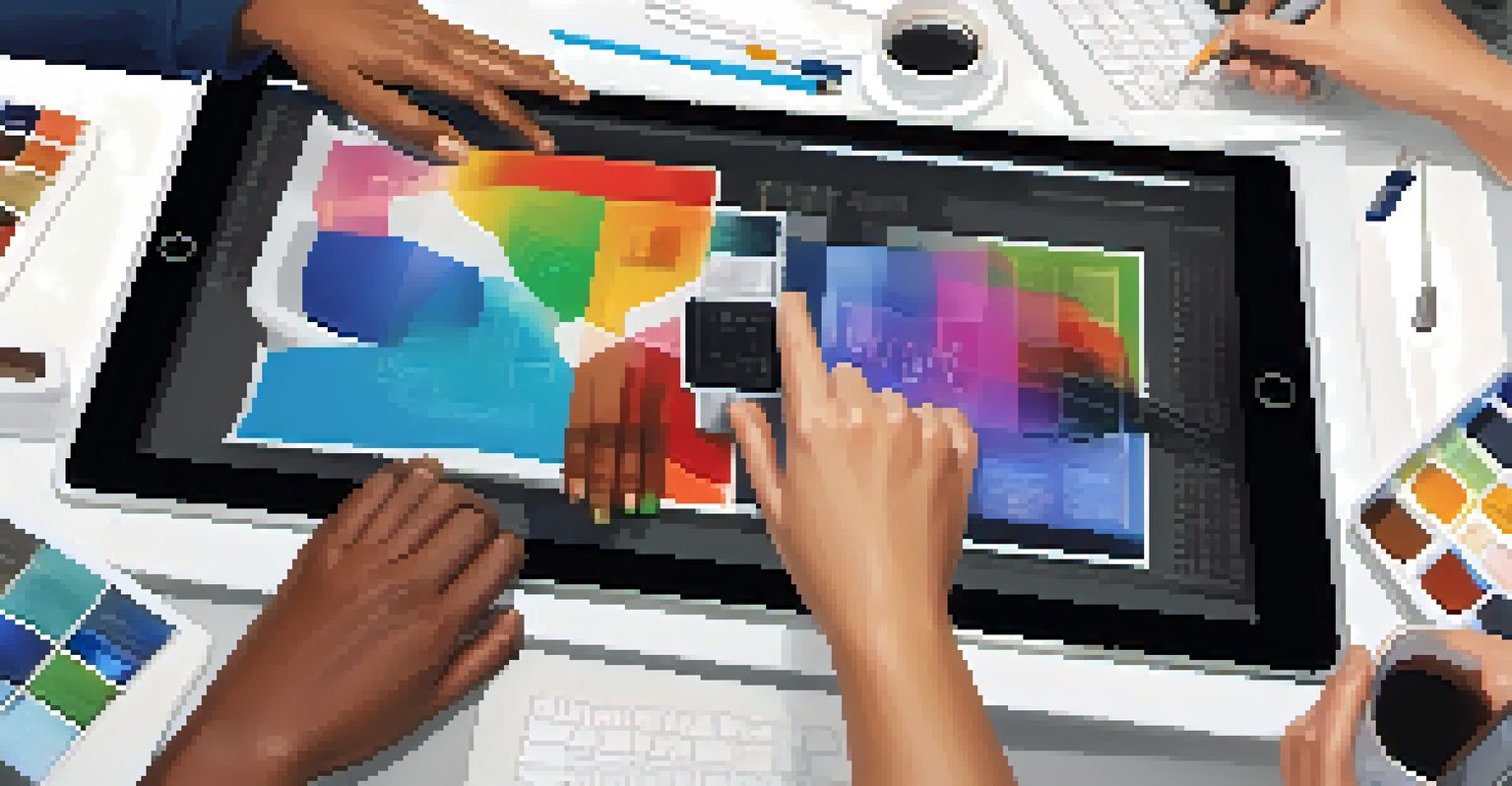Creating Opportunities for Collaborative Learning Across Disciplines

Understanding Collaborative Learning in Education
Collaborative learning is an educational approach where students work together to solve problems or complete tasks. This method not only encourages teamwork but also enhances critical thinking skills, as learners engage with diverse perspectives. By bringing together individuals from different disciplines, we can create a rich environment for knowledge sharing and innovation.
Alone we can do so little; together we can do so much.
For instance, when students from science and art collaborate on a project, they can merge analytical skills with creative expression. This cross-pollination of ideas often leads to unexpected solutions and a deeper understanding of the subject matter. Ultimately, collaborative learning prepares students for real-world scenarios where teamwork and interdisciplinary approaches are essential.
Moreover, collaborative learning fosters a sense of community among students. When they collaborate, they build relationships that can lead to lifelong networks. These connections not only enhance personal growth but also can spark future professional collaborations.
Benefits of Interdisciplinary Collaboration
Interdisciplinary collaboration offers a plethora of benefits for students, educators, and institutions alike. It allows students to draw connections between different fields, making their learning experience more holistic and relevant. For example, a project that combines technology and ethics can help students understand the implications of their work beyond just technical proficiency.

Additionally, such collaborations can lead to enhanced problem-solving skills. When students from various disciplines come together, they bring unique perspectives that can challenge conventional thinking. This diversity in thought is crucial for tackling complex issues that don’t fit neatly into one category.
Collaborative Learning Enhances Skills
Working together in diverse groups boosts critical thinking and problem-solving abilities.
Furthermore, interdisciplinary collaboration can enrich the curriculum, making it more engaging for students. By integrating various subjects, educators can create a more dynamic learning environment that caters to different learning styles and interests, ultimately fostering a love for lifelong learning.
Strategies for Fostering Collaborative Learning
To effectively foster collaborative learning, educators should first create a culture of trust and respect within the classroom. Establishing ground rules that promote open communication and active listening is essential. When students feel safe to share their ideas, they are more likely to engage fully in collaborative projects.
The whole is greater than the sum of its parts.
Another strategy is to design interdisciplinary projects that encourage students to step outside their comfort zones. For instance, a project that requires students to work in teams with varied expertise can spark creativity and innovation. By setting clear goals and allowing flexibility in how teams achieve those goals, educators can empower students to take ownership of their learning.
Lastly, utilizing technology can enhance collaborative learning experiences. Online platforms and collaborative tools enable students to connect and collaborate in real-time, even when they are not physically together. These tools can bridge gaps between disciplines, making it easier for students to share resources and ideas.
Creating Inclusive Learning Environments
An inclusive learning environment is crucial for effective collaborative learning. It ensures that all students, regardless of their background or abilities, feel valued and included. Educators can achieve this by incorporating diverse materials and perspectives into their teaching, fostering a sense of belonging.
Moreover, promoting equity in collaborative projects is key. Assigning roles that play to each student's strengths can help ensure that everyone contributes meaningfully. This not only boosts individual confidence but also enhances the overall quality of the group's work.
Interdisciplinary Projects Foster Growth
Combining different fields enriches education and prepares students for real-world challenges.
By celebrating diversity and encouraging participation from all students, educators can create a dynamic atmosphere that enriches the collaborative learning experience. This inclusive approach not only benefits the students involved but also prepares them to thrive in diverse professional environments.
Assessment in Collaborative Learning
Assessing collaborative learning can be challenging, as it involves evaluating both individual contributions and group dynamics. Educators should consider using a combination of self-assessments, peer evaluations, and teacher assessments to gain a comprehensive understanding of each student's performance. This multifaceted approach can provide valuable insights into both collaboration skills and individual accountability.
Additionally, establishing clear criteria for assessment from the outset is essential. By outlining expectations for both individual and group work, students will have a better understanding of what is required to succeed. This clarity can reduce anxiety and encourage students to engage more fully in the collaborative process.
Lastly, providing feedback throughout the collaborative project helps students improve their skills in real-time. Constructive feedback can guide students in their collaborative efforts, helping them to refine their approaches and enhance their learning outcomes.
Real-World Applications of Collaborative Learning
Collaborative learning isn't just confined to the classroom; it has significant real-world applications that can enhance students' future careers. For instance, in the workplace, employees often need to collaborate across departments to achieve common goals. By practicing collaborative skills in school, students are better prepared for these scenarios in their professional lives.
Moreover, many industries today prioritize interdisciplinary collaboration to drive innovation. Fields such as healthcare, technology, and environmental science rely on teams comprised of individuals with varied expertise. By engaging in collaborative learning during their education, students develop the skills necessary to thrive in these rapidly evolving environments.
Inclusivity is Key to Collaboration
Creating an inclusive environment ensures all students feel valued and contributes to team success.
Additionally, collaborative projects can lead to tangible outcomes that benefit the community. For example, students might work with local organizations to address social issues, creating solutions that have a real impact. These experiences not only enrich students' learning but also instill a sense of responsibility and civic engagement.
Future Directions for Collaborative Learning
As we look to the future, it's clear that collaborative learning will continue to evolve. With advancements in technology, we can expect even more innovative ways to facilitate collaboration among students across disciplines. Virtual reality, for instance, could provide immersive environments where students can engage in joint projects regardless of geographical barriers.
Moreover, the increasing emphasis on interdisciplinary studies in higher education suggests a promising trend for collaborative learning. As institutions recognize the importance of preparing students for complex global challenges, we can expect more programs that emphasize teamwork across diverse fields.

Finally, fostering a culture of lifelong collaborative learning will be essential. Encouraging students to value collaboration throughout their educational journey will prepare them not just for academic success, but for meaningful contributions to society as a whole.